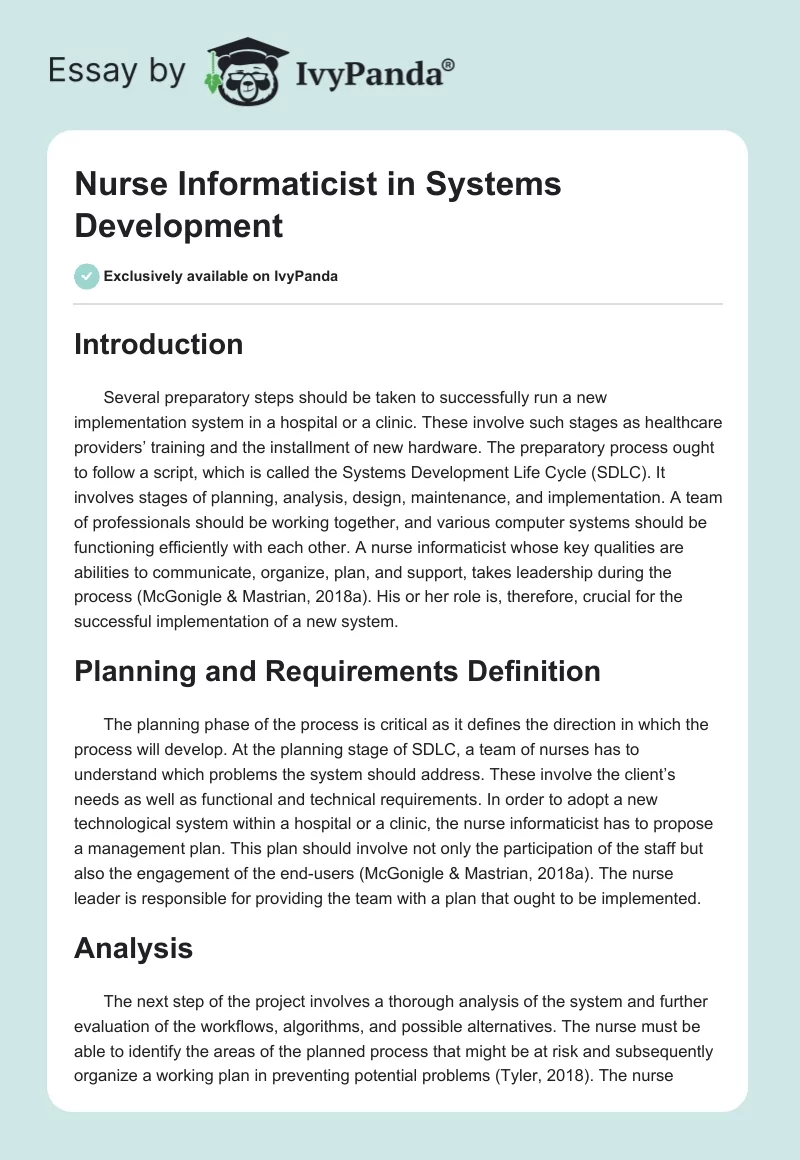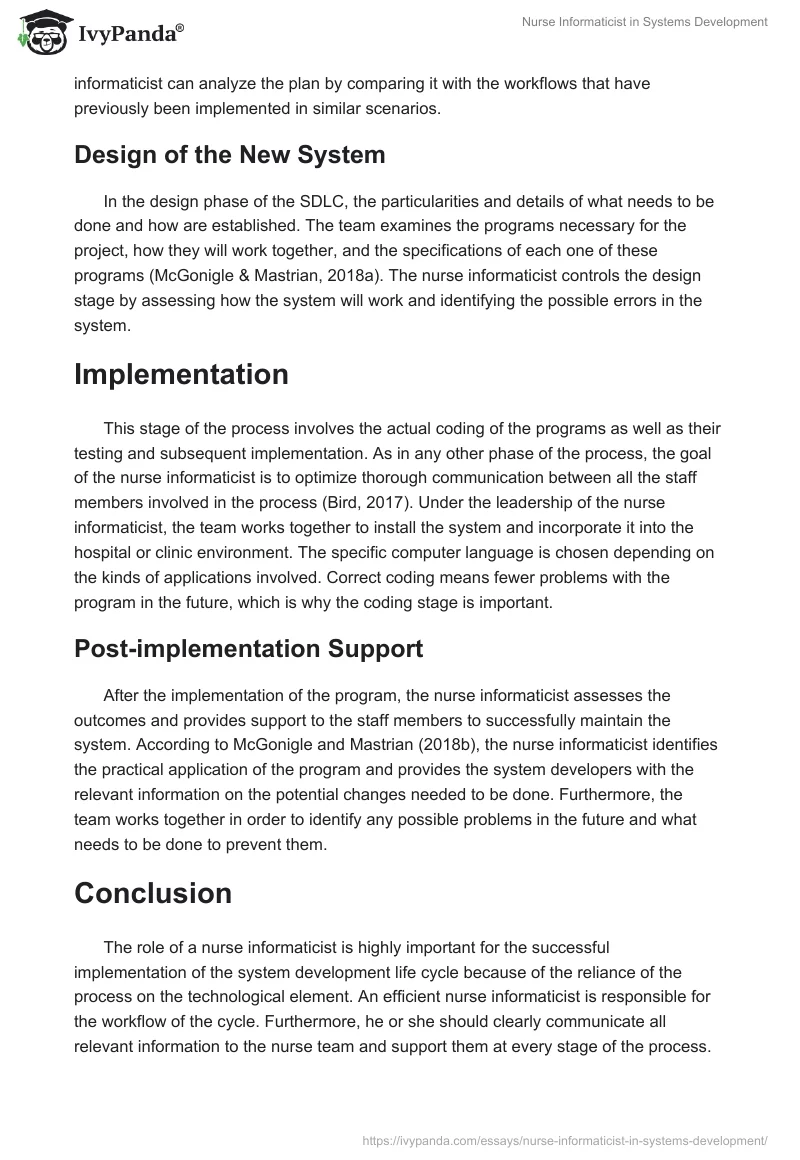Introduction
Several preparatory steps should be taken to successfully run a new implementation system in a hospital or a clinic. These involve such stages as healthcare providers’ training and the installment of new hardware. The preparatory process ought to follow a script, which is called the Systems Development Life Cycle (SDLC). It involves stages of planning, analysis, design, maintenance, and implementation. A team of professionals should be working together, and various computer systems should be functioning efficiently with each other. A nurse informaticist whose key qualities are abilities to communicate, organize, plan, and support, takes leadership during the process (McGonigle & Mastrian, 2018a). His or her role is, therefore, crucial for the successful implementation of a new system.
Planning and Requirements Definition
The planning phase of the process is critical as it defines the direction in which the process will develop. At the planning stage of SDLC, a team of nurses has to understand which problems the system should address. These involve the client’s needs as well as functional and technical requirements. In order to adopt a new technological system within a hospital or a clinic, the nurse informaticist has to propose a management plan. This plan should involve not only the participation of the staff but also the engagement of the end-users (McGonigle & Mastrian, 2018a). The nurse leader is responsible for providing the team with a plan that ought to be implemented.
Analysis
The next step of the project involves a thorough analysis of the system and further evaluation of the workflows, algorithms, and possible alternatives. The nurse must be able to identify the areas of the planned process that might be at risk and subsequently organize a working plan in preventing potential problems (Tyler, 2018). The nurse informaticist can analyze the plan by comparing it with the workflows that have previously been implemented in similar scenarios.
Design of the New System
In the design phase of the SDLC, the particularities and details of what needs to be done and how are established. The team examines the programs necessary for the project, how they will work together, and the specifications of each one of these programs (McGonigle & Mastrian, 2018a). The nurse informaticist controls the design stage by assessing how the system will work and identifying the possible errors in the system.
Implementation
This stage of the process involves the actual coding of the programs as well as their testing and subsequent implementation. As in any other phase of the process, the goal of the nurse informaticist is to optimize thorough communication between all the staff members involved in the process (Bird, 2017). Under the leadership of the nurse informaticist, the team works together to install the system and incorporate it into the hospital or clinic environment. The specific computer language is chosen depending on the kinds of applications involved. Correct coding means fewer problems with the program in the future, which is why the coding stage is important.
Post-implementation Support
After the implementation of the program, the nurse informaticist assesses the outcomes and provides support to the staff members to successfully maintain the system. According to McGonigle and Mastrian (2018b), the nurse informaticist identifies the practical application of the program and provides the system developers with the relevant information on the potential changes needed to be done. Furthermore, the team works together in order to identify any possible problems in the future and what needs to be done to prevent them.
Conclusion
The role of a nurse informaticist is highly important for the successful implementation of the system development life cycle because of the reliance of the process on the technological element. An efficient nurse informaticist is responsible for the workflow of the cycle. Furthermore, he or she should clearly communicate all relevant information to the nurse team and support them at every stage of the process.
References
Bird, P. (2017). A day in the life of a nurse informaticist: Implementation support.Journal of Informatics Nursing, 2(2), 27-29. Web.
Tyler, D. D. (2018). A day in the life of a nurse informaticist.Journal of Informatics Nursing, 3(4), 16-18. Web.
McGonigle, D., & Mastrian, K. G. (2017a). Systems development life cycle: Nursing informatics and organizational decision making. Nursing informatics and the foundation of knowledge (4th ed., pp. 175-187). Jones & Bartlett Learning.
McGonigle, D., & Mastrian, K. G. (2017b). Workflow and beyond meaningful use. Nursing informatics and the foundation of knowledge (4th ed., pp. 175-187). Jones & Bartlett Learning.


